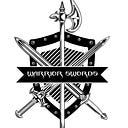Types of Medieval Swords: A Comprehensive Guide
Medieval swords were not just weapons of war; they symbolized power, prestige, and craftsmanship. Each type had its unique design and purpose, making them indispensable for knights and soldiers. In this blog, we’ll explore some of the most prominent types of medieval swords, highlighting their characteristics and roles during the Middle Ages.
1. Arming Sword
The arming sword, also known as a knightly sword, was the standard weapon used by knights during the early Middle Ages. It was a single-handed sword often used in combination with a shield. The arming sword typically had a straight, double-edged blade, making it effective for both slashing and thrusting.
Characteristics:
- Blade Length: Around 28–32 inches
- Weight: 2–3 pounds
- Hilt: Cross-shaped for hand protection
- Purpose: Used for close combat in battle and duels
The arming sword was a versatile weapon, often carried as a knight’s secondary weapon during battle, easily usable on foot or horseback.
2. Longsword
The longsword, which gained prominence in the late medieval period, was a larger, double-handed sword. Its extended grip allowed for a more powerful swing and greater reach. This made it particularly effective in both combat and martial arts during the medieval era.
Characteristics:
- Blade Length: 33–45 inches
- Weight: 2.5–4 pounds
- Grip: Two-handed or hand-and-a-half grip
- Purpose: Designed for both slashing and thrusting
Longswords were favored by knights in the late medieval period due to their versatility in both offensive and defensive techniques, often used in fencing or battle.
3. Claymore
The claymore was a large Scottish sword primarily used by Highland warriors. Known for its distinctive cross-shaped hilt with forward-sloping arms, the claymore was an imposing weapon on the battlefield. Its size and weight made it ideal for delivering devastating blows, although it required significant strength to wield effectively.
Characteristics:
- Blade Length: Around 40–55 inches
- Weight: 5–6 pounds
- Hilt: Cross-shaped, with forward-sloping quillons
- Purpose: Used for large-scale battles and open warfare
The claymore’s immense size and striking design made it an iconic weapon, particularly associated with the Scottish highlands.
4. Falchion
The falchion was a single-edged sword that resembled a machete, with a curved blade suited for chopping strikes. Its design was influenced by agricultural tools, making it both functional and deadly. It was typically used by infantrymen and was a popular weapon for close combat.
Characteristics:
- Blade Length: 30–36 inches
- Weight: 2–3 pounds
- Blade: Single-edged, slightly curved
- Purpose: Effective for slashing and chopping
Unlike other medieval swords, the falchion was simpler in design but no less effective, making it a practical weapon for less wealthy soldiers and peasants.
5. Greatsword
The greatsword, as the name suggests, was one of the largest and heaviest swords of the medieval period. It required two hands to wield and was often used to break through armor or fight multiple opponents. Its length made it ideal for open battlefields, though its size could be a disadvantage in tight quarters.
Characteristics:
- Blade Length: 50–72 inches
- Weight: 6–10 pounds
- Grip: Two-handed
- Purpose: Designed to deal heavy damage in battle
The greatsword’s sheer size and power made it a weapon of choice for heavy infantry, particularly those skilled in using such a formidable tool.
6. Rapier
The rapier emerged during the later medieval period and the Renaissance, favored for its light weight and precision. Unlike most medieval swords, the rapier was primarily designed for thrusting rather than slashing, making it an ideal weapon for dueling and self-defense.
Characteristics:
- Blade Length: 40–48 inches
- Weight: 2–3 pounds
- Blade: Thin, pointed, and designed for thrusting
- Purpose: Used for dueling and precision strikes
The rapier’s elegance and accuracy made it a popular weapon for the aristocracy, often used in duels or self-defense in urban settings.
Conclusion
Medieval swords were as varied as the battles in which they were used. From the versatile arming sword to the imposing greatsword, each type had its distinct characteristics that served specific purposes in warfare. Understanding the differences between these swords provides insight into the tactics and weaponry of the medieval period.
Whether you’re a history enthusiast or a collector, the rich history of medieval swords is fascinating and reflects the evolution of warfare and craftsmanship over centuries.
